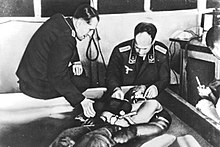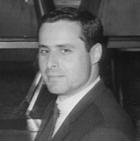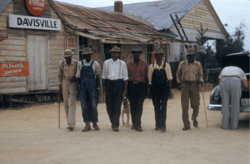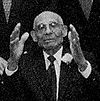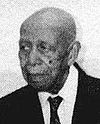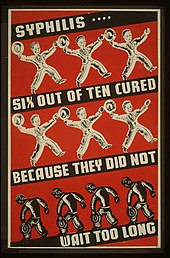From Wikipedia, the free encyclopedia
Nazi human experimentation was a series of medical experiments on large numbers of prisoners, including children, by Nazi Germany in its concentration camps in the early to mid 1940s, during World War II and the Holocaust. Chief target populations included Romani, Sinti, ethnic Poles, Soviet POWs, disabled Germans, and Jews from across Europe.
Nazi physicians and their assistants forced prisoners into participating; they did not willingly volunteer and no consent was given for the procedures. Typically, the experiments resulted in death, trauma, disfigurement or permanent disability, and as such are considered examples of medical torture.
At Auschwitz and other camps, under the direction of Eduard Wirths, selected inmates were subjected to various hazardous experiments that were designed to help German military personnel in combat situations, develop new weapons, aid in the recovery of military personnel who had been injured, and to advance the Nazi racial ideology.[1] Aribert Heim conducted similar medical experiments at Mauthausen.
After the war, these crimes were tried at what became known as the Doctors' Trial, and revulsion at the abuses perpetrated led to the development of the Nuremberg Code of medical ethics. The Nazi physicians in the Doctors' trial argued that military necessity justified their torturous experiments, and compared their victims to collateral damage from Allied bombings. But this defense, which was in any case rejected by the Tribunal, cannot apply to the twin experiments of Josef Mengele, which were performed on children and had no connection to military necessity.
Experiments
The table of contents of a document from the Nuremberg military tribunals prosecution includes titles of the sections that document medical experiments revolving around: food, seawater, epidemic jaundice, sulfanilamide, blood coagulation and phlegmone.[2] According to the indictments at the Subsequent Nuremberg Trials,[3][4] these experiments included the following:Experiments on twins
Experiments on twin children in concentration camps were created to show the similarities and differences in the genetics of twins, as well as to see if the human body can be unnaturally manipulated. The central leader of the experiments was Josef Mengele, who from 1943 to 1944 performed experiments on nearly 1,500 sets of imprisoned twins at Auschwitz. About 200 people survived these studies.[5] The twins were arranged by age and sex and kept in barracks between experiments, which ranged from injection of different dyes into the eyes of twins to see whether it would change their color to sewing twins together in attempts to create conjoined twins.[6][7] Often times, one twin would be forced to undergo experimentation, while the other was kept as a control. If the experimentation reached the point of death, Nazi's would bring in the second twin to kill them at the same time. Doctors would then look at the effects of experimentation and compare both bodies.[8]Bone, muscle, and nerve transplantation experiments
From about September 1942 to about December 1943 experiments were conducted at the Ravensbrück concentration camp, for the benefit of the German Armed Forces, to study bone, muscle, and nerve regeneration, and bone transplantation from one person to another.[9] Sections of bones, muscles, and nerves were removed from the subjects without use of anesthesia. As a result of these operations, many victims suffered intense agony, mutilation, and permanent disability.[9]On August 12, 1946 a survivor named Jadwiga Kamińska[10] gave a deposition about her time at Ravensbrück concentration camp and describes how she was operated on twice. Both operations involved one of her legs and although she never describes having any knowledge as to what exactly the procedure was, she explains that both times she was in extreme pain and developed a fever post surgery. Yet she was given little to no care. Kamińska describes being told that she had been operated on simply because she was a "young girl and a Polish patriot". She describes how her leg oozed pus for months after the operations.[11]
Prisoners were also experimented on by having their bone marrow injected with bacteria to study the effectiveness of new drugs being developed for use in the battle fields. Many prisoners left the camps with disfigurement that would last the rest of their lives. [12]
Head injury experiments
In mid-1942 in Baranowicze, occupied Poland, experiments were conducted in a small building behind the private home occupied by a known Nazi SD Security Service officer, in which "a young boy of eleven or twelve [was] strapped to a chair so he could not move. Above him was a mechanized hammer that every few seconds came down upon his head." The boy was driven insane from the torture.[13]Freezing experiments
A cold water immersion experiment at Dachau concentration camp presided over by Professor Ernst Holzlöhner (left) and Dr. Sigmund Rascher (right). The subject is wearing an experimental Luftwaffe garment
In 1941, the Luftwaffe conducted experiments with the intent of discovering means to prevent and treat hypothermia. There were 360 to 400 experiments and 280 to 300 victims indicating some victims suffered more than one experiment.[14]
| Attempt no. | Water temperature | Body temperature when removed from the water | Body temperature at death | Time in water | Time of death |
|---|---|---|---|---|---|
| 5 | 5.2 °C (41.4 °F) | 27.7 °C (81.9 °F) | 27.7 °C (81.9 °F) | 66' | 66' |
| 13 | 6 °C (43 °F) | 29.2 °C (84.6 °F) | 29.2 °C (84.6 °F) | 80' | 87' |
| 14 | 4 °C (39 °F) | 27.8 °C (82.0 °F) | 27.5 °C (81.5 °F) | 95' | |
| 16 | 4 °C (39 °F) | 28.7 °C (83.7 °F) | 26 °C (79 °F) | 60' | 74' |
| 23 | 4.5 °C (40.1 °F) | 27.8 °C (82.0 °F) | 25.7 °C (78.3 °F) | 57' | 65' |
| 25 | 4.6 °C (40.3 °F) | 27.8 °C (82.0 °F) | 26.6 °C (79.9 °F) | 51' | 65' |
| 4.2 °C (39.6 °F) | 26.7 °C (80.1 °F) | 25.9 °C (78.6 °F) | 53' | 53' |
Another study placed prisoners naked in the open air for several hours with temperatures as low as −6 °C (21 °F). Besides studying the physical effects of cold exposure, the experimenters also assessed different methods of rewarming survivors.[16] "One assistant later testified that some victims were thrown into boiling water for rewarming."[14]
Beginning in August of 1942, at the camp Dachau, prisoners were forced to sit in tanks of freezing water for up to 3 hours. After subjects were frozen, they then underwent different methods for rewarming. Many subjects died in this process. [17]
The freezing/hypothermia experiments were conducted for the Nazi high command to simulate the conditions the armies suffered on the Eastern Front, as the German forces were ill-prepared for the cold weather they encountered. Many experiments were conducted on captured Russian troops; the Nazis wondered whether their genetics gave them superior resistance to cold. The principal locales were Dachau and Auschwitz. Dr Sigmund Rascher, an SS doctor based at Dachau, reported directly to Reichsführer-SS Heinrich Himmler and publicised the results of his freezing experiments at the 1942 medical conference entitled "Medical Problems Arising from Sea and Winter".[18] In a letter from September 10, 1942, Dr. Sigmund Rascher describes an experiment on intense cooling performed in Dachau where people were dressed in fighter Pilot uniforms and submerged in freezing water. Doctor Rascher had some of the victims completely underwater and others only submerged up to the head.[19] Approximately 100 people are reported to have died as a result of these experiments.[20]
Malaria experiments
From about February 1942 to about April 1945, experiments were conducted at the Dachau concentration camp in order to investigate immunization for treatment of malaria. Healthy inmates were infected by mosquitoes or by injections of extracts of the mucous glands of female mosquitoes. After contracting the disease, the subjects were treated with various drugs to test their relative efficiency.[21] Over 1,200 people were used in these experiments and more than half died as a result.[22] Other test subjects were left with permanent disabilities. [23]Immunization experiments
At the German concentration camps of Sachsenhausen, Dachau, Natzweiler, Buchenwald, and Neuengamme, scientists tested immunization compounds and serums for the prevention and treatment of contagious diseases, including malaria, typhus, tuberculosis, typhoid fever, yellow fever, and infectious hepatitis.[24]Epidemic Jaundice
From June of 1943 till January of 1945 at the concentration camps, Sachsenhausen and Natzweiler, experimentation with epidemic jaundice was conducted. The test subjects were injected with the disease in order to discover new inoculations for the condition. These tests were conducted for the benefit of the German Armed Forces. Many suffered great pain in these experiments. [25]Mustard gas experiments
At various times between September 1939 and April 1945, many experiments were conducted at Sachsenhausen, Natzweiler, and other camps to investigate the most effective treatment of wounds caused by mustard gas. Test subjects were deliberately exposed to mustard gas and other vesicants (e.g. Lewisite) which inflicted severe chemical burns. The victims' wounds were then tested to find the most effective treatment for the mustard gas burns.[26]
Child victims of Nazi experimentation show incisions where axillary lymph nodes had been surgically removed after they were deliberately infected with tuberculosis at Neuengamme concentration camp. They were later executed.[27]
Sulfonamide experiments
From about July 1942 to about September 1943, experiments to investigate the effectiveness of sulfonamide, a synthetic antimicrobial agent, were conducted at Ravensbrück.[28] Wounds inflicted on the subjects were infected with bacteria such as Streptococcus, Clostridium perfringens (a major causative agent in gas gangrene) and Clostridium tetani, the causative agent in tetanus.[29] Circulation of blood was interrupted by tying off blood vessels at both ends of the wound to create a condition similar to that of a battlefield wound. Infection was aggravated by forcing wood shavings and ground glass into the wounds. The infection was treated with sulfonamide and other drugs to determine their effectiveness.Sea water experiments
From about July 1944 to about September 1944, experiments were conducted at the Dachau concentration camp to study various methods of making sea water drinkable. These victims were subject to deprivation of all food and only given the filtered sea water.[30] At one point, a group of roughly 90 Roma were deprived of food and given nothing but sea water to drink by Dr. Hans Eppinger, leaving them gravely injured.[18] They were so dehydrated that others observed them licking freshly mopped floors in an attempt to get drinkable water.[31]A Holocaust survivor named Joseph Tschofenig wrote a statement on these seawater experiments at Dachau. Tschofenig explained how while working at the medical experimentation stations he gained insight into some of the experiments that were performed on prisoners, namely those where they were forced to drink salt water. Tschofenig also described how victims of the experiments had trouble eating and would desperately seek out any source of water including old floor rags. Tschofenig was responsible for using the X-ray machine in the infirmary and describes how even though he had insight into what was going on he was powerless to stop it. He gives the example of a patient in the infirmary who was sent to the gas chambers by Dr. Sigmund Rascher simply because he witnessed one of the low-pressure experiments.[32]
Sterilization and fertility experiments
The Law for the Prevention of Genetically Defective Progeny was passed on 14 July 1933, which legalized the involuntary sterilization of persons with diseases claimed to be hereditary: weak-mindedness, schizophrenia, alcohol abuse, insanity, blindness, deafness, and physical deformities. The law was used to encourage growth of the Aryan race through the sterilization of persons who fell under the quota of being genetically defective.[33] 1% of citizens between the age of 17 to 24 had been sterilized within 2 years of the law passing.Within 4 years, 300,000 patients had been sterilized.[34] From about March 1941 to about January 1945, sterilization experiments were conducted at Auschwitz, Ravensbrück, and other places by Dr. Carl Clauberg.[26] The purpose of these experiments was to develop a method of sterilization which would be suitable for sterilizing millions of people with a minimum of time and effort. The targets for sterilization included Jewish and Roma populations.[12] These experiments were conducted by means of X-ray, surgery and various drugs. Thousands of victims were sterilized. Aside from its experimentation, the Nazi government sterilized around 400,000 people as part of its compulsory sterilization program.[35] One survivor, who underwent experimentation at Auschwitz, said that the experimentation she endured caused, "fainting from severe pain for a year and a half." Years later she went to the doctor and discovered that her uterus had become one comparable to that of a 4-year-old. [36]
Intravenous injections of solutions speculated to contain iodine and silver nitrate were successful, but had unwanted side effects such as vaginal bleeding, severe abdominal pain, and cervical cancer.[37] Therefore, radiation treatment became the favored choice of sterilization. Specific amounts of exposure to radiation destroyed a person’s ability to produce ova or sperm, sometimes administered through deception. Many suffered severe radiation burns.[38]
M.D. William E. Seidelman is a professor from the University of Toronto who in collaboration with Dr. Howard Israel of Columbia University published a report on an investigation on the Medical experimentation performed in Austria under the Nazi Regime. In that report he mentions a Doctor Hermann Stieve, who used the war to experiment on live humans. Dr. Stieve specifically focused on the reproductive system of women. He would tell women their execution date in advance, and he would evaluate how their psychological distress would affect their menstruation cycles. After they were murdered, he would dissect and examine their reproductive organs. Some of the women were even raped after they were told the date when they would be killed, so that Dr. Stieve could study the path of sperm through their reproductive system.[39]
Experiments with poison
Somewhere between December 1943 and October 1944, experiments were conducted at Buchenwald to investigate the effect of various poisons. The poisons were secretly administered to experimental subjects in their food. The victims died as a result of the poison or were killed immediately in order to permit autopsies. In September 1944, experimental subjects were shot with poisonous bullets, suffered torture and often died.[26]Incendiary bomb experiments
From around November 1943 to around January 1944, experiments were conducted at Buchenwald to test the effect of various pharmaceutical preparations on phosphorus burns. These burns were inflicted on prisoners using phosphorus material extracted from incendiary bombs.[26]High altitude experiments
In early 1942, prisoners at Dachau concentration camp were used by
Sigmund Rascher in experiments to aid German pilots who had to eject at high altitudes. A low-pressure chamber
containing these prisoners was used to simulate conditions at altitudes
of up to 20,000 m (66,000 ft). It was rumored that Rascher performed vivisections on the brains of victims who survived the initial experiment.[40] Of the 200 subjects, 80 died outright, and the others were executed.[18]
In a letter from April 5, 1942 between Dr. Sigmund Rascher and Heinrich
Himmler, Rascher explains the results of a low-pressure experiment that
was performed on people at Dachau Concentration camp in which the
victim was suffocated while Rascher and another unnamed doctor took note
of his reactions. The person was described as 37 years old and in good
health before being murdered. Rascher described the victim’s actions as
he began to lose oxygen and timed the changes in behavior. The 37 year
old began to wiggle his head at 4 minutes, a minute later Rascher
observed that he was suffering from cramps before falling unconscious.
He describes how the victim then lay unconscious, breathing only 3 times
per minute, until he stopped breathing 30 minutes after being deprived
of oxygen. The victim then turned blue and began foaming at the mouth.
An autopsy followed an hour later.[41]
In a letter from Heinrich Himmler to Dr. Sigmund Rascher on April 13, 1942, Himmler orders Rascher to continue the high altitude experiments and to continue experimenting on prisoners condemned to death and to “determine whether these men could be recalled to life”. If a victim could be successfully resuscitated, Himmler ordered that he be pardoned to “concentration camp for life”.[42]
Blood coagulation experiments
Sigmund Rascher experimented with the effects of Polygal, a substance made from beet and apple pectin, which aided blood clotting. He predicted that the preventive use of Polygal tablets would reduce bleeding from gunshot wounds sustained during combat or during surgery. Subjects were given a Polygal tablet, and shot through the neck or chest, or their limbs amputated without anaesthesia. Rascher published an article on his experience of using Polygal, without detailing the nature of the human trials and also set up a company to manufacture the substance, staffed by prisoners.[43]Aftermath
Other documented transcriptions from Heinrich Himmler include phrases such as “These researches… can be performed by us with particular efficiency because I personally assumed the responsibility for supplying asocial individuals and criminals who deserve only to die from concentration camps for these experiments.”[44] Many of the subjects died as a result of the experiments conducted by the Nazis, while many others were executed after the tests were completed to study the effects post mortem.[45] Those who survived were often left mutilated, suffering permanent disability, weakened bodies, and mental distress.[18][46] On 19 August 1947, the doctors captured by Allied forces were put on trial in USA vs. Karl Brandt et al., commonly known as the Doctors' Trial. At the trial, several of the doctors argued in their defense that there was no international law regarding medical experimentation.[citation needed] Some doctors also claimed that they had been doing the world a favor. A SS doctor was quoted saying that "Jews were the festering appendix in the body of Europe." He then went on to argue he was doing the world a favor by eliminating them. [8]The issue of informed consent had previously been controversial in German medicine in 1900, when Dr. Albert Neisser infected patients (mainly prostitutes) with syphilis without their consent. Despite Neisser's support from most of the academic community, public opinion, led by psychiatrist Albert Moll, was against Neisser. While Neisser went on to be fined by the Royal Disciplinary Court, Moll developed "a legally based, positivistic contract theory of the patient-doctor relationship" that was not adopted into German law.[47] Eventually, the minister for religious, educational, and medical affairs issued a directive stating that medical interventions other than for diagnosis, healing, and immunization were excluded under all circumstances if "the human subject was a minor or not competent for other reasons", or if the subject had not given his or her "unambiguous consent" after a "proper explanation of the possible negative consequences" of the intervention, though this was not legally binding.[47]
In response, Drs. Leo Alexander and Andrew Conway Ivy drafted a ten-point memorandum entitled Permissible Medical Experiment that went on to be known as the Nuremberg Code.[48] The code calls for such standards as voluntary consent of patients, avoidance of unnecessary pain and suffering, and that there must be a belief that the experimentation will not end in death or disability.[49] The Code was not cited in any of the findings against the defendants and never made it into either German or American medical law.[50] This code comes from the Nuremberg Trials where the most heinous of Nazi leaders were put on trial for their war crimes. [51] To this day, the Nuremberg Code remains a major stepping stone for medical experimentation. [52]
Modern ethical issues
Frederik Pohl said in a 1963 editorial in Galaxy Science Fiction that despite their cruelty the Nazi experiments produced no useful results; "it was not science and it was not medicine". If the "Herr Doktors" had, he wrote, murdered pregnant women to study their ovaries the crimes would have advanced embryology, but the earliest stages of prenatal development were first observed in Boston in 1942 "without either torture or killing".[53]The results of the Dachau freezing experiments have been used in some modern research into the treatment of hypothermia, with at least 45 publications having referenced the experiments since the Second World War.[14] This, together with the recent use of data from Nazi research into the effects of phosgene gas, has proven controversial and presents an ethical dilemma for modern physicians who do not agree with the methods used to obtain this data.[31] Some object on an ethical basis, and others have rejected Nazi research purely on scientific grounds, pointing out methodological inconsistencies. In an often-cited review of the Dachau hypothermia experiments, Berger states that the study has "all the ingredients of a scientific fraud" and that the data "cannot advance science or save human lives."[14]
Controversy has also risen from the use of results of biological warfare testing done by the Imperial Japanese Army's Unit 731.[54] The results from Unit 731 were kept classified by the United States until the majority of doctors involved were given pardons.[55]
